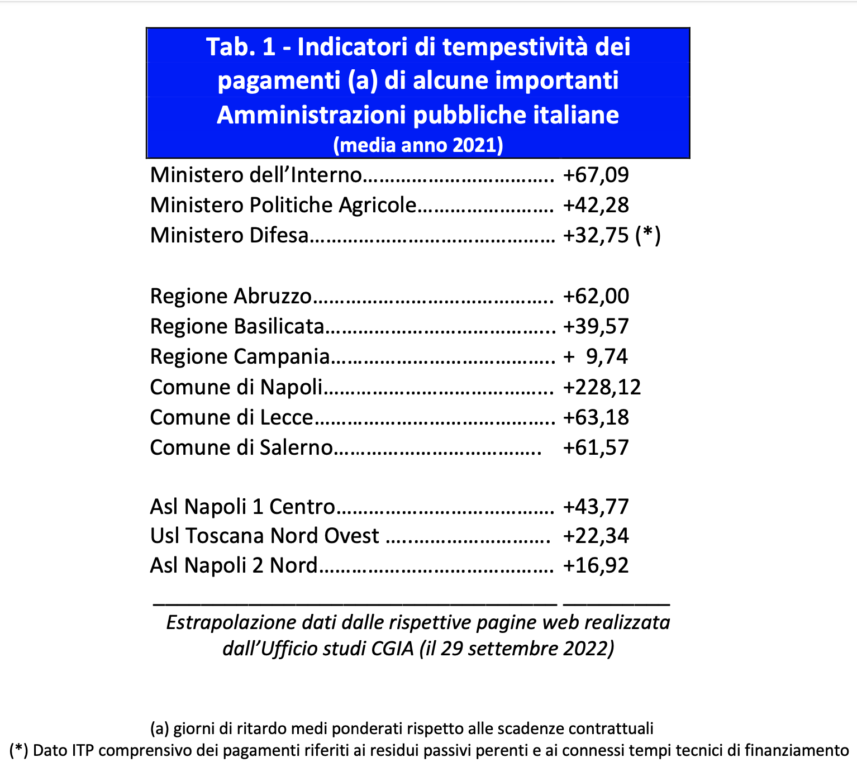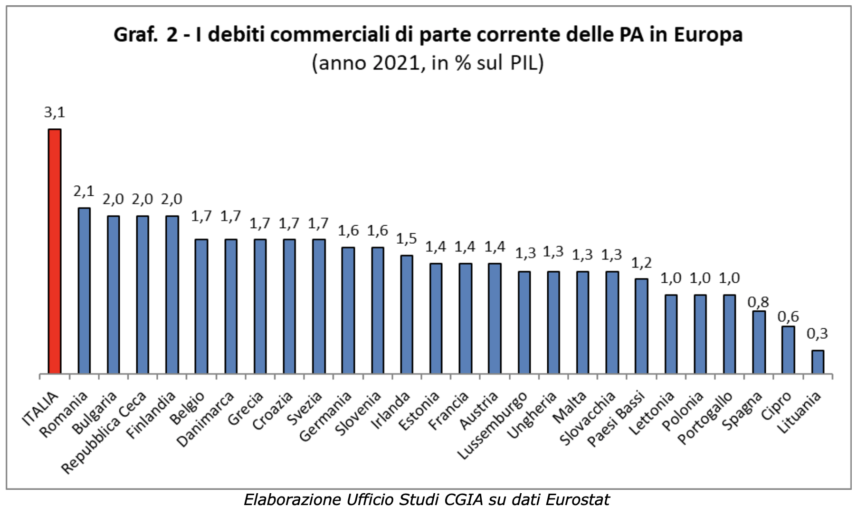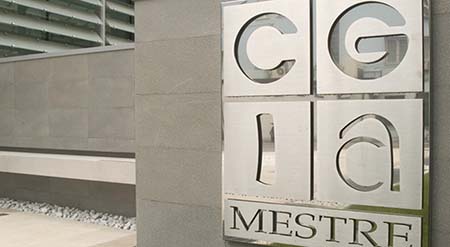There is not only the dear energy emergency and in the last election campaign no party has spent a word against a "historic" criticality. Unfortunately, everyone pretended nothing happened, as if the problem did not exist. Instead, the many SMEs involved know it well, it exists, and how. We are talking about the stock of current account trade payables of our Public Administration (PA) which, according to the latest estimates, amounts to 55,6 billion euros. Basically, the central State and its peripheral branches continue "guilty" not to pay their suppliers, mainly made up of SMEs and, when they do, this occurs with serious delay compared to the payment times provided for by law. The CGIA Studies Office returns to this issue.
The Municipality of Naples pays 228 days late
In Italy, the orders of our PA to private individuals total about 150 billion euros per year and the number of supplier companies is around one million. With regard to the Promptness of Payments Indicator (ITP), the CGIA Studies Office has drawn up a form where it listed, for some of the most important Italian public administrations, the entities that paid their suppliers in 2021 by not respecting the provisions of the law on payment times. Among the ministries, the least reactive to pay the invoices received was the Interior with an ITP equal to +67,09; this means that the Interior Ministry liquidates its suppliers with more than 2 months delay with respect to the deadline set by the contract. Agricultural policies follow with +42,28 and Defense with +32,75. Among the regional administrations, however, the greatest delays in settling payments were recorded in Abruzzo with 62 days beyond the contractual deadline, in Basilicata with 39,57 and in Campania with an average delay of 9,74 days. Among the municipalities, however, the most critical situation occurred in Naples. Also last year, the municipal administration of the Campania regional capital the days of delay in payments were 228,15, in Lecce 63,18 and in Salerno 61,57. Finally, among the ASLs, that of Napoli 1 Centro paid with a delay of 43,77 days, the USL Toscana Nord Ovest with 22,34 and Napoli 2 Nord with 16,92.

The solution? Offset tax debts with trade receivables
What suggestion can you give to the new executive who will take office in the coming weeks so that he can resolve this age-old question that is putting a lot of pressure on many SMEs? For the CGIA Studies Office, a straight, direct and universal compensation must be provided for by law between certain liquid and collectable credits accrued by a company against the PA and the tax and social security debts that the same must pay to the Treasury. Thanks to this automatism, we would solve a problem that we have been dragging along for decades. Without liquidity available, in fact, many artisans and as many small entrepreneurs find themselves in serious difficulty and in such a delicate moment for the country's economy it is unacceptable that the debts of the PA towards entrepreneurs have been constantly growing since 2017.

We are black jersey in Europe
Among the 27 EU countries, no one else in 2021 shows such a negative score as ours. In Italy, the incidence of PA trade debts on GDP was 3,1 per cent. Of our main commercial competitors, for example, Spain's current account debt to GDP is 0,8 per cent, in the Netherlands 1,2 per cent, in France 1,4 per cent and in Germany all. '1,6 percent. Even Greece, which last year had a public debt / GDP ratio of nearly 203 percent, has an incidence of trade debt on GDP that is almost half of ours: 1,7 percent.

They pay important bills, but not those of smaller amounts
It is correct to point out that in recent years, late payments, measured with the ITP, have on average decreased, even if according to the Court of Auditors a trend is consolidating in which public administrations favor the quick payment of invoices for large amounts. higher and intentionally delaying the liquidation of those with a lower amount. An operating method that obviously penalizes small businesses that generally work in contracts or supplies for amounts significantly lower than those "reserved" for larger production activities.
The Court of Justice of the EU has already sentenced us
With the sentence published on January 28, 2020, the European Court of Justice affirmed that Italy has violated art. 4 of the EU directive 2011/7 on payment times in commercial transactions between public administrations and private companies. Although in recent years the average delays with which invoices are paid in Italy have slightly decreased, in 2021 the European Commission sent a letter of formal notice to the Draghi government on non-compliance with the provisions of the European directive approved 10 years ago. . Finally, another procedure still open against our country concerns the code of public contracts which provides for a payment term of 45 days, when at the EU level the deadline is 30 days.
